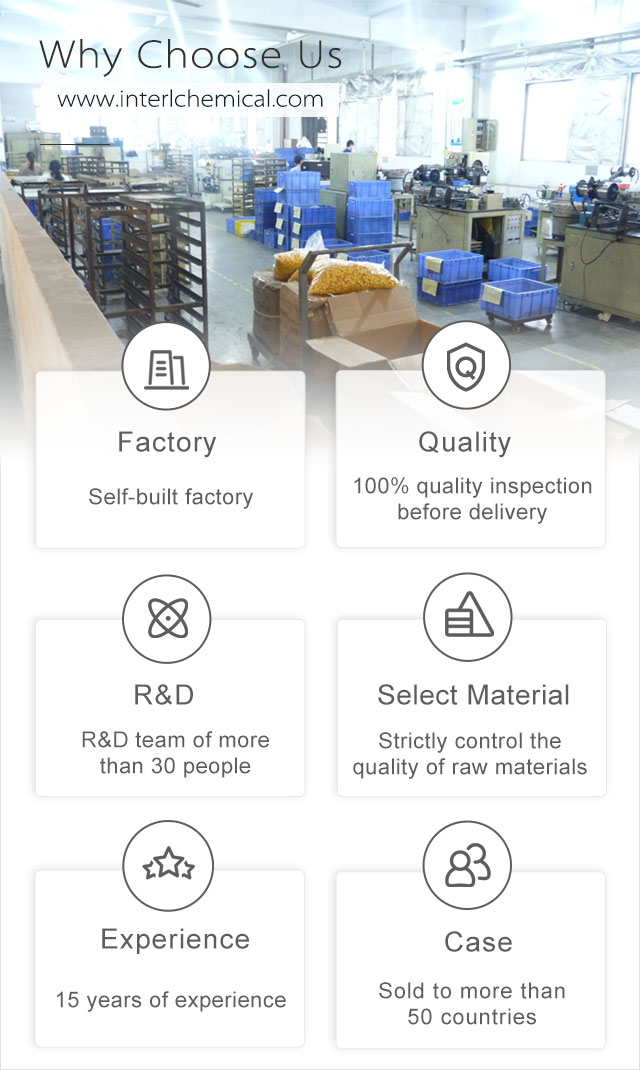





Related Attributes
Product details
Rotenone Powder and Rotenone analogues are a group of selective insecticidal active substances extracted from leguminous plants of the genera Cichorium, Ashwagandha, Haplocarpus, Chickweed, Poison Ichthyospermum and Pterostilbene, etc., which are capable of inhibiting the nerve and muscle tissues, and among them, Rotenone Powder has the strongest toxicity.

Rotenone CAS 83-79-4 is very rich in resources, and 68 species of legumes have been found to contain rotenone, while rotenone analogs are in more than 74 species. Rotenone is produced in the tropics and subtropics, and grows widely in Southeast Asia, and there are abundant resources of wild and planted Rotenone in South China, such as Guizhou Province, etc. Rotenone CAS 83-79-4 is unstable in nature, and is easy to oxidative degradation and photolysis. Generally, its toxic components decompose in 5-6 days, while in the sunny summer, it takes only 2-3 days.Rotenone CAS 83-79-4 is also easily degraded in soil and water. The half-life is only 1-3 days.
Because of its short half-life, easy decomposition and non-pollution, Rotenone Raw Materials is commonly used in crop pest control and fish pond cleaning all over the world, and is regarded as a kind of natural low-toxicity and high-efficiency pesticide.
Applications / Functions of Rotenone Powder
Rotenone Powder is used as agricultural insecticide, Rotenone CAS 83-79-4 can also be used to control human and animal ectoparasites and for biochemical research.

Rotenone Raw Materials An inhibitor of mitochondrial electron transport.
Rotenone CAS 83-79-4 is a mitochondrial inhibitor, which can inhibit mitochondrial electron transfer, and is a commonly used insecticide. Rotenone enters into the body of the insect to inhibit the respiratory chain of the mitochondria, resulting in respiratory disorders such as respiratory distress and convulsions, slow movement, paralysis and death of the pest.
Physicochemical Property of Rotenone Powder
Rotenone Raw Materials are colorless orthogonal hexagonal lamellar crystals. Decompose when exposed to light and air. Soluble in acetone, carbon tetrachloride, ethanol, acetic acid, chloroform, ether and other organic solvents, almost insoluble in water.
Rotenone Powder solution oxidized to yellow, orange to deep red in the light, and can be deposited to precipitate dehydrofisetinone and fisetinone crystals. Relative density 1.27, melting point 165-166°C, boiling point 210-220°C (0.67kPa), 185-186°C (bicrystalline). Moderately toxic, oral LD50 in rats 132mg/kg.

Rotenone CAS 83-79-4 is a kind of mitochondrial inhibitor, can inhibit the mitochondrial electron transfer, is a commonly used insecticide, the entry of Rotenone into the insect body to inhibit the mitochondrial respiratory chain, leading to respiratory system disorders such as respiratory distress and convulsions in pests, and slow action, paralysis and death.
Mode of Action of Rotenone Powder
Early studies have shown that the mechanism of action of Rotenone Powder mainly affects the respiration of insects, mainly interacting with a component between NADH dehydrogenase and coenzyme Q. Rotenone CAS 83-79-4 inhibits the electron transfer chain of pest cells, thus reducing the level of ATP in the organism, and ultimately depriving the pest of its energy supply, which results in the slowing down of movement and paralysis. slow death due to sluggishness and paralysis. Mitochondria, NADH dehydrogenase, butanedioic acid, mannitol, and other substances in the cells of many organisms have some sensitivity to rotenone.
Electron transfer in Setayriacervi mitochondria from NADPH to NADH, a process that can be highly inhibited by rotenone. Moreover, the activity of the transbutyleneglutarate reductase system in the mitochondrial granules of the filarial parasite Setariadigitata is sensitive to rotenone.
Rotenone Raw Materials and salicylloxamic acid inhibit the electric potential (EMT) of the Trypanosomabruceibrucei mitochondrial inner membrane, which indirectly affects the activity of NADH dehydrogenase; Rotenone Raw Materials also inhibits the activity of NADH to cytochrome C and NADH to coenzyme Q reductase activities in the mitochondrial respiratory chain of Trypanosomabruceibrucei, with inhibition rates as high as 80% to 90%.
Rotenone CAS 83-79-4 inhibits mannitol synthesis in Cryptococcusneoformans cells, possibly affecting the activity of mannitol synthase and thus indirectly affecting the organism.
Why choose us?

HRK Factory

About Shipping

Pharmaceutical Intermediate manufacturers
©2023 Xi'an Henrikang Biotech Co., Ltd.,